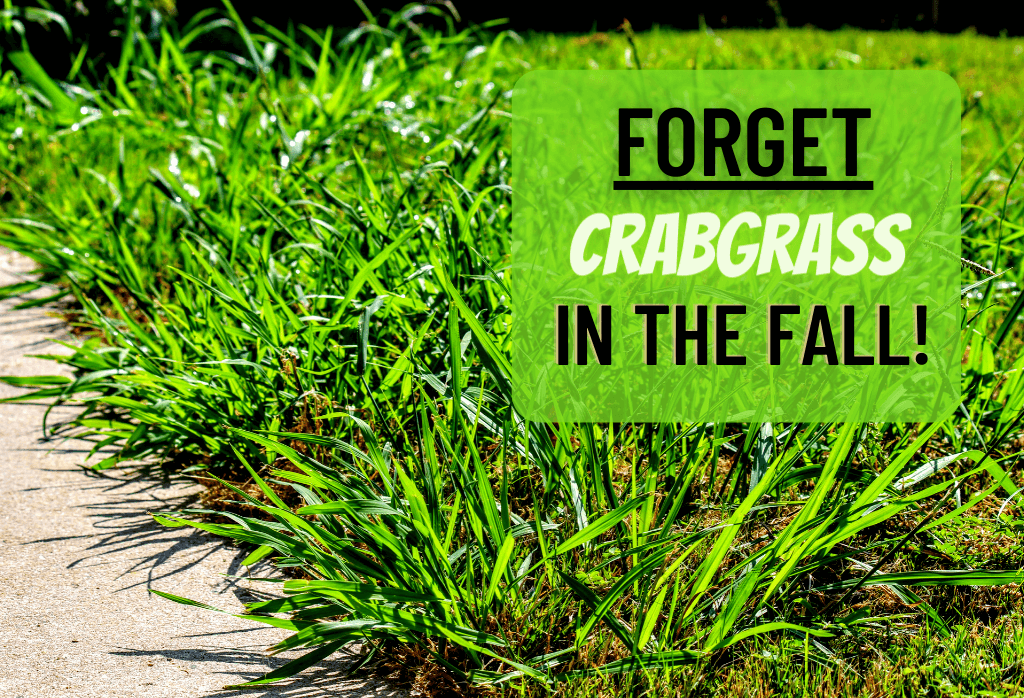Crabgrass Turning Purple
If you've ever looked out at your lawn and noticed patches of purple, you may be wondering what's going on. In some cases, this purple coloration is due to an invasive weed known as crabgrass. But why does crabgrass turn purple, and what can you do about it?
The Pain Points of Crabgrass Turning Purple
Crabgrass is a common lawn weed that can quickly take over if left unchecked. In addition to being unsightly, it can also be difficult to eradicate without damaging the surrounding grass. And when you add in the purple discoloration, it's easy to see why homeowners may be concerned.
The Answer
Crabgrass turns purple due to cold temperatures. When temperatures drop below 50°F, the chlorophyll in the plant breaks down, causing the leaves to turn purple. This is essentially the plant's way of protecting itself from the cold. Interestingly enough, crabgrass doesn't always turn purple in response to cold temperatures – in some cases, it may simply die off completely.
Summary of Main Points
In summary, crabgrass turning purple is a common issue that many homeowners may encounter. This weed can be difficult to manage and can quickly spread throughout your lawn if left unchecked. While the purple coloration may seem alarming, it's simply a protective response to cold temperatures. In the following sections, we'll take a closer look at this phenomenon and provide tips for managing crabgrass in your lawn.
What's In a Name? Crabgrass Turning Purple Explained
While the purple coloration of crabgrass may be aesthetically displeasing, it's actually an important indicator of the plant's health. When temperatures drop below 50°F, the chlorophyll in the plant breaks down, causing the leaves to turn purple. This tells us that the plant is alive, but is responding to cold temperatures by protecting itself.
I first noticed the purple coloration in my own lawn last winter. I was worried that something was seriously wrong with my grass, but after doing some research, I learned that crabgrass turning purple is actually a normal occurrence.
If you notice patches of purple in your lawn, it's important to take action right away to prevent crabgrass from spreading. One of the most effective ways to do this is to apply a pre-emergent weed killer in the spring, before crabgrass has a chance to germinate. Additionally, maintaining a healthy lawn through regular watering, fertilization, and mowing can help prevent weed growth.
Tips for Managing Crabgrass
Crabgrass is a stubborn weed that can be difficult to eradicate once it takes hold. Here are a few tips for managing crabgrass in your lawn:

- Apply a pre-emergent weed killer in the spring
- Maintain a healthy lawn through regular watering, fertilization, and mowing
- Hand-pull small patches of crabgrass
- Consider using an organic weed killer, such as vinegar or boiling water
By following these tips, you can help keep crabgrass under control and maintain a healthy, green lawn.
The Importance of Timing
One of the key factors in managing crabgrass is timing. Because crabgrass is an annual weed, it germinates from seed each year and dies off in the fall. This means that if you want to prevent crabgrass from taking hold, you need to apply a pre-emergent weed killer before the seeds have a chance to germinate.

In my own experience, I've found that applying a pre-emergent weed killer in late March or early April works best for preventing crabgrass. This gives the product enough time to activate and form a barrier against weed germination.
Questions and Answers
Q: Is crabgrass harmful to pets?
A: While crabgrass itself isn't toxic to pets, it can be harmful if pets ingest large quantities of it. Additionally, if you're using herbicides to control crabgrass, it's important to keep pets off the treated area until the product has fully dried.
Q: Can crabgrass be composted?
A: Yes, crabgrass can be composted, but be sure to remove any seeds or seedheads before adding it to your compost pile. Otherwise, you may end up spreading the weed seeds throughout your garden.
Q: How can I prevent crabgrass from spreading to my neighbor's lawn?
A: Unfortunately, it can be difficult to prevent crabgrass from spreading to neighboring lawns. One option is to create a physical barrier, such as a trench or garden edging, to prevent the spread of seeds. Additionally, maintaining a healthy lawn can help prevent weed growth and reduce the risk of seed spread.
Q: Is crabgrass a sign of poor soil?
A: While crabgrass can grow in poor soil, it's not necessarily an indicator of poor soil health. Crabgrass tends to thrive in warm, sunny areas with sparse vegetation, so it's often found in lawns that are mowed too short or not watered enough.
Conclusion
Crabgrass turning purple is a common issue that many homeowners may encounter, particularly in colder climates. While the purple coloration may be alarming, it's simply a response to cold temperatures, and doesn't necessarily indicate a problem with your lawn. By following the tips outlined in this article, you can help prevent crabgrass from taking hold and maintain a healthy, green lawn all year round.
Gallery
Forget Crabgrass In The Fall - ExperiGreen

Photo Credit by: bing.com / crabgrass experigreen
Cold Damage In Bermudagrass (or, "Even The Grass Bleeds Purple At KSU

Photo Credit by: bing.com / grass turf
Understanding Crabgrass & Benefits Of Pre-Emergent Treatment - Erbert Lawns

Photo Credit by: bing.com / crabgrass does look emergent benefits pre understanding treatment weed common lawns flowers hgtv between plants combat invader closer
Crabgrass_purple_base_in_turf - Wyndham Creek Park City, Kansas

Photo Credit by: bing.com / crabgrass turf
University Of Delaware Cooperative Extension, Kent Co., Commercial

Photo Credit by: bing.com /